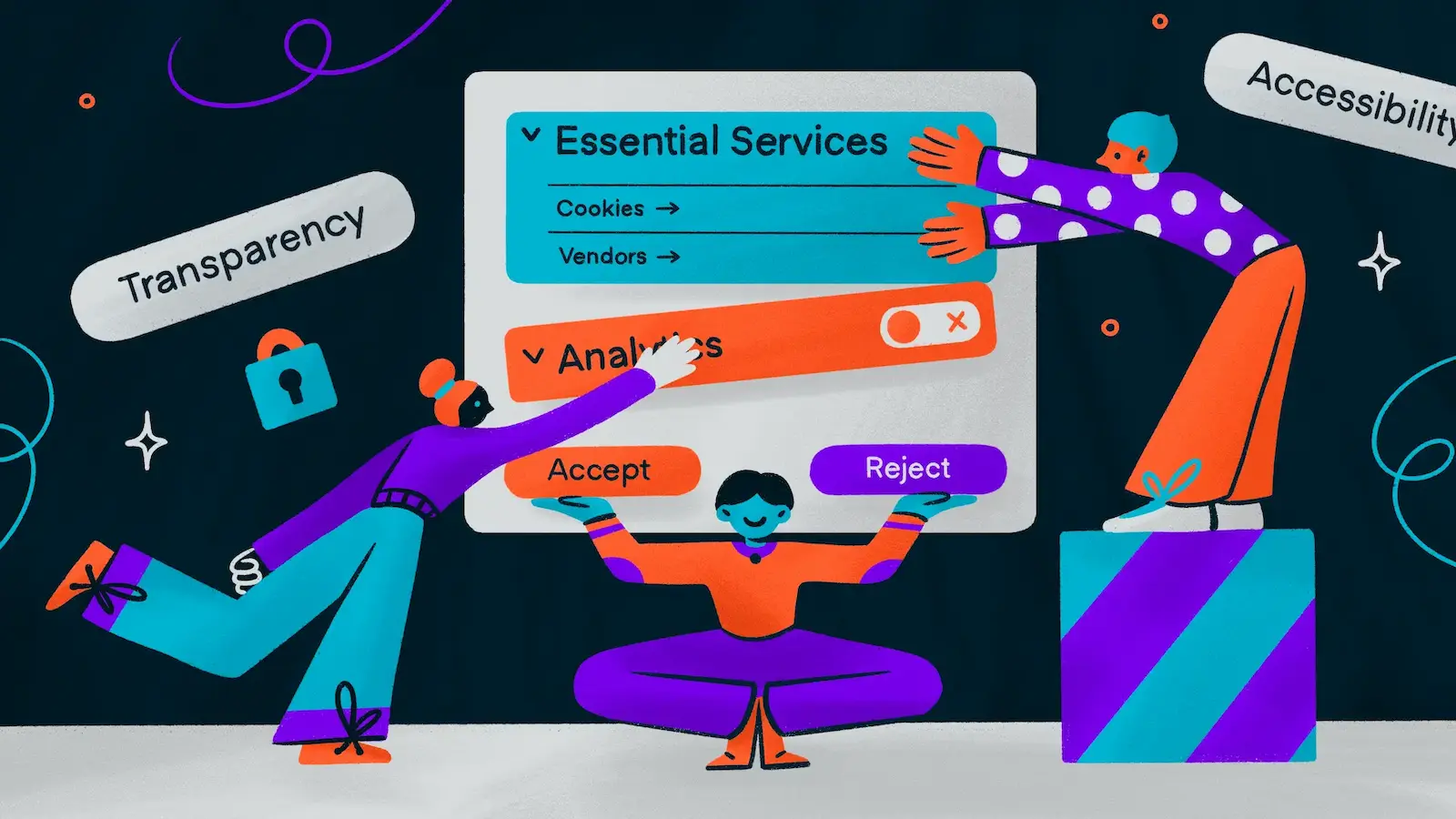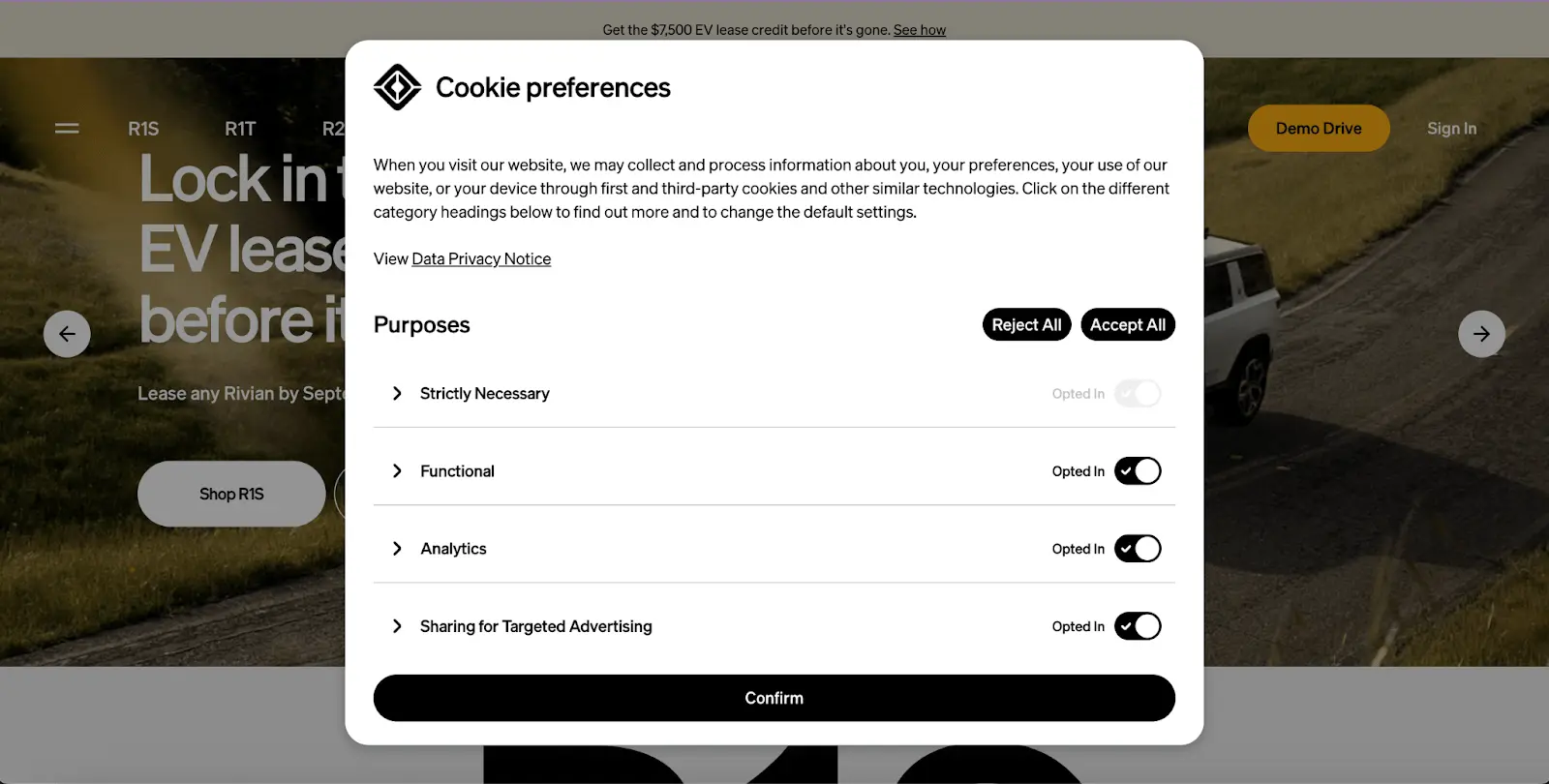
Growing tired of OneTrust? Migrate seamlessly with Ketch Switch

Consent is not a checkbox. It’s not a popup, a footnote, or a legal hurdle to “get through.” It’s a conversation, a mutual agreement between a user and a brand.
In 2025, that conversation needs to be:
Brands that treat consent as a formality risk regulatory fines, poor data quality, and—perhaps most importantly—loss of user trust.
Read more: Dark Patterns: Why They Still Work (and How to Spot Them)
In this final article of our dark pattern 3-part series, we’ll explore:
Let’s break the cycle of manipulation and redesign consent from the inside out.
Let’s set the stage for why now is the time to prioritize ethical consent.
If users feel tricked, they'll opt out. Not just of cookies, but of your entire brand. And when regulators review your UX, they’ll ask:
“Was the user given a real choice?”
That’s why ethical consent UX isn’t just a design trend. It’s a business strategy and legal imperative.
Designing ethical consent experiences isn’t about sacrificing performance. It’s about creating interfaces that build trust, offer real choice, and respect users' time and intelligence.
Ethical consent UX can be summarized by three core pillars: Clarity, Control, and Context.
Good consent design should feel like a simple conversation, not a courtroom contract.

Olly provides consent options that are straightforward and user-friendly. Each choice is explained in plain terms, supported by clear toggle-based controls. This helps users quickly understand what they’re agreeing to, without unnecessary complexity.
Read more: OLLY optimizes privacy and strengthens customer trust with Ketch
Consumer proclivities for data sharing evolve over time, and so does consent. It isn’t a one-time event. Your brand should make it easy for users to revisit and change their privacy choices at any time.

SeatGeek gives users real control right from the start:
Read more: SeatGeek: scalable GDPR compliance with Ketch
Timing matters. Pushing a full-screen banner the second someone arrives? That’s overwhelming and often ineffective.

Rivian asks for consent in context: navigation features only activate once users enable location sharing in Data & Privacy settings, with the benefit (Google Maps integration) explained first. Their website also separates cookie categories and provides a privacy hub where users can drill deeper by topic, an example of layered, progressive disclosure.
Consent UX done right does more than comply with regulations. It signals to users that your company values their time, autonomy, and trust.
Here’s what ethical UX gives you that dark patterns never will:
You don’t need to rely on manipulation to collect valuable data or drive conversions. In fact, moving away from dark patterns can enhance your brand, improve user engagement, and lead to more meaningful, trust-based interactions.
The shift starts with a simple mindset change: from tricking users to building trust.
Here’s how to swap manipulative dark patterns for trust-centered design:
Read more: Are Dark Patterns Illegal in 2025? Honda, the Law, and UX Loopholes
One of the biggest obstacles to ethical consent UX isn't a lack of intention—it's a lack of collaboration. In many organizations, for instance, legal and marketing teams operate in silos, with different goals, timelines, and definitions of success.
This disconnect can result in consent experiences that are either legally overcautious and unusable, or overly aggressive and ethically questionable.
Here’s how to fix this internal misalignment:
As privacy regulations tighten and third-party cookies phase out, brands are turning to zero-party data as a cleaner, more sustainable way to understand their audience.
Zero-party data is information that a user intentionally and proactively shares with a brand. This includes preferences, interests, lifestyle details, or purchase intentions, usually provided in exchange for something of value.
Unlike first-party data (passively collected) or third-party data (acquired from external sources), zero-party data is voluntary. That makes it incredibly powerful, and incredibly dependent on trust.
In other words, zero-party data—info users share voluntarily—has become gold in a cookieless world. But you can’t trick your way into getting it. You have to earn it.
Don’t ask for preferences before someone’s seen value. Ask after they’ve engaged, subscribed, or explored.
Make it worth their time. Think: personalization, recommendations, curated content, exclusive access.
“Tell us your preferences so we can send the right content—not too much, not too little.”
Example:
A meditation app asks users for mood and goals after 2 sessions, then tailors audio recommendations.
This feels like help, not data collection.
If there's one mindset shift the industry needs, it's this: stop thinking about consent as a legal hurdle to clear—and start treating it as a relationship to build.
Consent is not something you extract. It’s something you earn and sustain. Think of consent like a subscription to trust:
Brands that lead with trust don’t just survive, they thrive.
Go further: Progressive consent
Here’s the truth: dark patterns might boost short-term data collection but they damage long-term relationships, increase legal risk, and erode brand value.
The brands that stand out in 2025 will be the ones that say:
“We respect your time. We respect your data. And we want your consent, not your compliance.”
Consent UX isn’t just about design. It’s about values.
Let’s design accordingly. Get in touch with a Ketch expert today, we’ll be more than happy to help.
Go further: Dark patterns matter– and consumers are the victims
